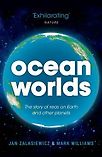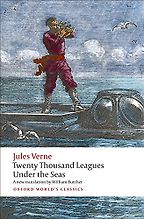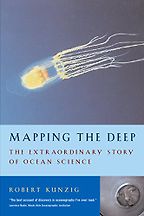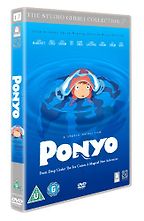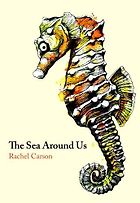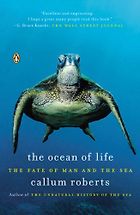As the chair of the Anthropocene Working Group, you’re well-positioned to answer the question, what is the Anthropocene?
It is a concept improvised by the Nobel Prize-winning chemist Paul Crutzen, who worked on the ozone layer. He was in a meeting in Mexico in the year 2000 when people were talking about global change and environmental change, and the Holocene epoch—the post-glacial epoch that we live in.
He was getting progressively frustrated by this discussion, and eventually he said that things have changed so much in the world, that we’re no longer living in the Holocene, but in ‘the . . . Anthropocene’. The idea was born there.
It is the idea that humans have changed the world’s physical surface structure, its chemistry, and its biology, enough to change geological time and geological history.
The idea took off. Crutzen was a highly respected, influential scientist working alongside people interested in processes of global change, biodiversity loss and global warming.
Now I’m part of a group which is examining the next step. This is to see if the Anthropocene, as well as being a widely used symbol for human impact on earth, could also become a formal part of the Geological Time Scale to join the Jurassic, the Cretaceous, the Pleistocene, and so forth.
To put the Anthropocene on the Geological Time Scale would be a large step, particularly given that we geologists are a slow and conservative bunch, and that the time scale is meant to be stable. It would be an affirmation that the world’s geology really has changed.
There has been debate about when the Anthropocene should be thought to begin. Could you update us on the Anthropocene Working Group’s latest thinking on that matter?
The Anthropocene, as a concept, has spread far and wide, and has been used by many different communities in the sciences, social science, the humanities, and the arts. Everyone has their own perspective on it.
One proposal is for an ‘early Anthropocene’, which would take over much of the Holocene. The rationale for the early Anthropocene is that human impact can be traced back many thousands of years into the past, with the effects of farming, and the extinction of animals such as the woolly rhinoceros, Irish Elk and mammoth.
However, there have been major changes to the carbon cycle, the nitrogen cycle, the phosphorus cycle, to the biosphere, and to biodiversity, that have only happened in the last couple of centuries, and particularly since the mid-20th century, during what is sometimes called the ‘great acceleration’.
So, the mid-20th century seems to be the best place to put a boundary for a geological time unit, and that’s what we’re working on now. There are a whole set of markers which can turn up in strata both on land and in the sea. These markers include plastics, concrete, and the fly ash which is spread via smoke from factories and power stations all around the world.
What is the relationship between oceans and the Anthropocene?
Oceans form a large part of what one might call the Earth System. They cover roughly two-thirds of the planet, with water usually to a depth of some five kilometres. Life started in the oceans, and was present there for much longer than it has been present to any significant extent on land. And crucially, oceans regulate the carbon cycle.
A lot of the human impact that we associate with the Anthropocene started on land, with farming and hunting. However, in the last few centuries, and particularly in the last few decades, these changes have spread out far into the oceans.
I was intrigued that your first recommendation was a work of fiction: Jules Verne’s Twenty Thousand Leagues Under the Sea.
I think that a lot of people like myself who have become involved in the world of science, started our enthusiasms not through scientific texts, but through works of the imagination.
Jules Verne was a master of tales of action and adventure. I remember loving Twenty Thousand Leagues Under the Sea as a youngster. Yet re-reading it recently, I was struck not just by its dynamic plot, but also by how much science he smuggled in.
In this romance, there is much description of different kinds of animals and plants of the sea, and their taxonomic classification. The various mysterious animals, such as the giant squid and whales, come to the foreground of the work in a wonderful way.
It would be a mistake to think that this work simply reflects nineteenth-century attitudes of exploitation. For example, there’s a scene in which Captain Nemo tells off Ned Land, the brave but gung-ho sailor who likes to hunt for pleasure. Nemo tells him that there may be other ways of looking at the world. It’s surprisingly prescient in a number of ways.
Of course, much of the science in Verne’s romances is not accurate. Journey to the Centre of the Earth is a good example: its subterranean worlds are completely implausible. But the kind of geology that he put in—the volcanoes, the battles of the ancient monsters, ichthyosaur, plesiosaur, and so on—did its job, which was to catch the imagination. Once you’ve caught the imagination, then more subtle work can take over from there.
Rachel Carson is best known for her book Silent Spring, which had a significant impact on environmental movements in the US. Why did you chose The Sea Around Us?
This was a chance discovery. I had always thought of Rachel Carson as an environmental activist—a very effective one—on DDT and other issues. And then suddenly, I flipped through the pages of this book that I found on a market store, and found that it’s wonderful.
It’s a popular science book about the oceans as they were known in the early 1950s, when they were just beginning to be understood. It’s beautifully written: it’s poetic, evocative, and creates an air of mystery. It still deserves reading today. You can enjoy it, and then you can read a more up-to-date book to answer some of the queries that she posed in the book.
For instance, she was writing before the idea of continental drift and plate tectonics had become accepted. So there are speculations on how ancient the landscape was beneath the oceans. One can read her puzzlement with pleasure. And a lot of the science—the biological parts, the oceanographic parts, the history of ocean research—still holds up very well.
Get the weekly Five Books newsletter
Thinking about the literary qualities of the work, there was one passage in particular that stood out to me: ‘When I think of the floor of the deep sea, the single, overwhelming fact that possesses my imagination is the accumulation of sediments. I see always the steady, unremitting, downward drift of materials from above, flake upon flake, layer upon layer’.
Carson takes a scientific idea, and expresses it in way that captures the imagination. This passage is typical of her writing.
Here, she was posing a question that had been posed before. As the Earth is very old, and sediment is being routed all the time from the land to the sea, how is it that the sea isn’t full of sediment?
When she was writing, she could not know the answer to that question, which is that the oceans are being steadily pushed deep into the earth, together with the sediment that covers them. So, the ocean floor is much younger than we thought it was: it is not more than a couple of hundred million years old.
She wasn’t aware of the revolution in geological knowledge to come, but she was already thinking through the implications of sedimentation as it was then understood.
You mentioned that The Sea Around Us was written in the early 1950s, and that a lot of the science has changed since that time. Does Robert Kunzig’s Mapping the Deep provide a good point-of-entry for people who want to know more about that science?
Yes, it takes you into the science, and how oceanography is done. It explains how the sea floor and the currents were mapped out, and brings us up-to-date with the story of plate tectonics.
Briefly, plate tectonics began to be understood properly in the 1960s. People looked the structure of the ocean crust, and the way that it gets younger towards the centre of the ocean ridges, and deduced that ocean crust must be forming even now as we speak. And as the ocean crust forms, it gradually slides apart and carries the continents with it. That really was a revolution in geology.
Mapping the Deep is perhaps not quite as poetic as Rachel Carson’s book, but it is still wonderful. As a popular book on oceanography, it’s very hard to beat.
When did the technology first become available to map the ocean floor?
People tried in the nineteenth century, by taking samples of the ocean bed systematically. But it was an awfully long and arduous business to do that.
Later, after the second world war, people developed a picture of the ocean floor by bouncing sound waves off it. Through this technique, people then discovered the mid-ocean ridges. In turn, these ridges formed one major plank of evidence for plate tectonics. Much of this technology had initially been developed in the military for submarine tracking, but it was later used in civilian science.
Another type of technology involved measuring the magnetism of rocks at a large scale simply by towing a magnetometer behind a ship or a plane. The Earth’s magnetism has flipped, with the North Pole becoming South, South becoming North, every million years or so. When this happens, stripes of different magnetism are formed in the ocean floor crust. Mapping out those stripes made people realise that the ocean crust was being progressively formed at the ocean ridges. For a brief while, people thought that the Earth must be expanding.
In general, can you learn much about the history of the Earth from the geology of the oceans that you can’t learn from the geology of the land?
Yes, lots. The history preserved in the oceans is not very long, so if you want to go back a billion years, then you have to go on land. For example, I spend a lot of time on the Silurian Period, which is about 400 million years ago. For that work, I have to travel to places like Wales, Scotland and Poland.
“The sediment that piles up in the oceans tells beautiful, complete stories of the earth, and of the climate in particular.”
But for the record of the last couple of hundred million years, and particularly the last hundred million years, the sediment that piles up in the oceans tells beautiful, complete stories of the earth, and of the climate in particular. A lot of our understanding of climate and how it works is derived from ocean sediments. We have also learned a lot from the oceans about animal species and evolution.
Thinking about maps and the idea of mapping the deep, you’ve written elsewhere how inspiring you found the National Geographic maps.
Oh, I remember it vividly as if I were still there. I remember as a teenager opening National Geographic, and a folded map tumbled out. We were always used to seeing the oceans as just a pastel blue. And suddenly, you saw these mountain ranges, and fractures and cracks. You could see an entire ocean in front of you. It was, I think, for me and for many other people, a key moment in understanding what the Earth really is.
Of course, we now know that those maps, beautifully constructed by the oceanographers Bruce Heezen and Mary Tharp, were in large part inspired guesses. But they got all the essentials right. Like Jules Verne, they conveyed a sense of mystery: in their case, the mystery of the oceans on a two-dimensional piece of paper.
You mentioned that the concept of the Anthropocene is closely bound up with the idea of humans having a huge impact on the earth’s geological systems and the biosphere. Is Callum Roberts’s The Ocean of Life a good place to find out more about the threats that humans pose to the oceans?
Yes, it’s a moving—and at times heart-breaking—summary of how humans have had a devastating impact upon the planet.
Over the space of a few hours of reading, Callum Roberts offers us a very good impression of all the changes that are happening to the oceans today. He has made an in-depth study of the history of fishing, and environmental pollution. He charts chemical changes, ocean acidification, and global warming: he shows how the oceans are warming and visibly expanding through the extra heat.
He also outlines the drastic biological changes that have occurred, and the way in which humans have become the top predator not just on land but in the sea. Humans have removed most of the other top predators, and fundamentally refashioned the ecological web of the oceans.
What is the danger posed by ocean acidification?
Because we humans are putting billions of tonnes of carbon into the air each year to drive our lives, we have—as is well-known—created global warming. We have warmed the planet by just over one degree so far.
Luckily for the climate, but not so luckily for the oceans, part of that carbon is dissolved in rainwater to form carbonic acid, or dissolves directly into the oceans from the air. As a consequence, the oceans are now measurably acidifying. They are one-tenth of a pH point more acid than they were a century or so ago. This doesn’t sound very much, but as it’s a logarithmic scale, it means its actually thirty per cent more hydrogen atoms drifting around in the oceans. These hydrogen atoms cause chemical mayhem on subtle systems like the physiology of animals, or the shell-building abilities of shellfish and corals.
Combined with warming, ocean acidification poses a great threat to plankton and to coral reefs. Even over the last couple of summers, the warming effect has been destroying the corals of the Great Barrier Reef in Australia. As a long-term problem, this is something that would take thousands of years to get back to normal. It’s one of the major issues of current human-driven global change.
Roberts also talks about the Great Pacific Garbage Patch. How are garbage patches formed in the ocean, and why they are problematic?
This is a problem, rather like that of ocean acidification, that has crept up on us. It stems from an Anthropocene phenomenon: the post-war invention of plastics.
Plastics are wonderfully useful. They’re durable and don’t degrade easily, and bacteria microbes can’t easily eat them.
Yet plastics can very easily get washed from the land into the sea, and once they’re there, because they are so light, they simply float and travel enormous distances. They end up in stagnant patches in the middle of oceans, in what are called ocean gyres.
Nowadays, there’s more plastic in some parts of the oceans than there is plankton. Eventually, the plastic will go to the floor of the ocean, because plankton will colonise it and weigh it down, or something will eat it and either excrete it, or the animal will die and drift to the sea floor carrying that plastic with it.
But before that happens, the plastic can remain in the oceans for years, decades, perhaps even centuries. It’s a major hazard for any sort of larger macroscopic life, such as fish, turtles, and sea birds.
Roberts also suggests a range of possible solutions to some of the problems that the oceans are facing. Are you broadly sympathetic with some of his suggestions?
“If we are to avoid our world becoming even more conspicuously plastic-covered, then we’re going to have to experiment, and put into action a range of measures.”
Yes—I think it’s important to propose solutions as well as to identify problems. With plastic, we’re at the stage where there is a ferment of ideas about what to do. Some people have suggested great booms or sweeps that filter out plastic from the sea. Perhaps more practically, others have proposed using plastic instead of tar to build roads: that is happening now in places like Scotland and India. Again, putting a charge on plastic bags in shops and supermarkets has been hugely effective in reducing their use.
Clearly, if we are to avoid our world becoming even more conspicuously plastic-covered, then we’re going to have to experiment, and put into action a range of measures.
Moving to your last selection: why did you chose the film Ponyo?
Well, the films of Hayao Miyazaki have been one of the great bonuses of being a parent. He is one of the great storytellers. He also has a genius for showing, in a non-judgemental and matter-of-fact way, how the world is changing in the Anthropocene.
Five Books interviews are expensive to produce. If you're enjoying this interview, please support us by donating a small amount.
For example, in Ponyo, which is a film about the adventures of a young boy and a being from the sea, there’s an underwater scene in which a dredger is seen ploughing the sea floor. As it ploughs through the mud, a fish tries to get out of the way; we also see junk and plastic bottles being disturbed. Within a few seconds, we realise how the sea floor has been changed by people. There is no commentary, or sense of moralising: the scene is just there.
And in fact, dredging has had an enormous impact on the oceans. Trawlers scrape through the mud and sand on the ocean floor, de-structuring the continental shelves, and completely de-structuring any biological community there.
In recent years, trawling has attracted scientific attention, and has been recognized as being responsible for some of the most fundamental changes to the earth wrought by humans.
In another scene in Ponyo, we see some Devonian armoured fish—the kind of things that one can hammer out from the Old Red Sandstone strata. It’s a beautiful vignette set within the overall narrative. These magical little fragments speak to me immediately as a geologist—a person who is interested in the Earth and how it works.
You mentioned earlier that the idea of the Anthropocene has gained a wide following outside of geological circles. Do you welcome this wider engagement?
In short, yes. I and my geologist colleagues are currently engaged in discussions and joint projects with artists, historians, philosophers, and lawyers. Together, we are trying to develop and convey an understanding of how the Eearth works, and how it is changing.
I think that the concept of the Anthropocene has been hugely important in bringing these communities together. The more links we can make between disciplines, the better we can cope with whatever environmental changes will happen.
As a geologist, you must be very used to thinking in terms of the Geological Time Scale. Do you think that the idea of the Anthropocene has encouraged more people to start thinking in terms of the longer scale of the planet’s life?
Yes, one of the great things about the Anthropocene is that it has made people interested in the Geological Time Scale as a whole. Once people encounter the concept of the Anthropocene, they start asking about the Holocene, and the Pleistocene, how these time units are organized, and what they mean.
One interesting development to have emerged over the last couple of years is the idea of an intermediate time scale. We have a human time scale, which is short: we typically deal with days, weeks, years and possibly human generations. Then we have the Geological Time Scale, which is huge and beyond imagination: it covers millions of years. This time scale is fascinating, but seems abstract and intractable.
With the Anthropocene and the attempt to project trends into the future, there has emerged the idea of an intermediate time scale. This is a time scale on which both humanly- and geologically-significant things happen. This is a time scale on which we can still feel emotionally-connected, because it is only a few generations forward and backwards, and yet on which significant changes to the Earth and its biosphere can be detected. I think that working within that intermediate time scale forms a bridge from the present to the very big geological time scale of geology.
Five Books aims to keep its book recommendations and interviews up to date. If you are the interviewee and would like to update your choice of books (or even just what you say about them) please email us at [email protected]

